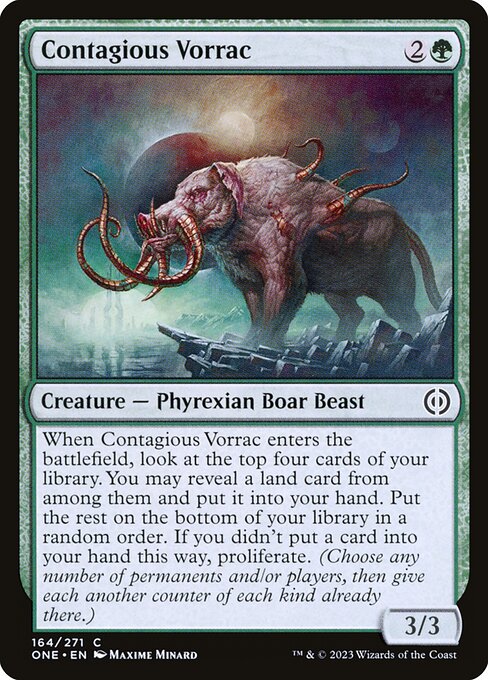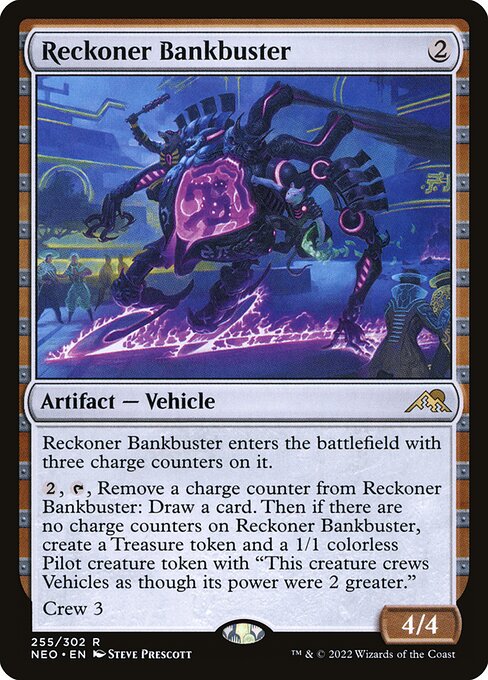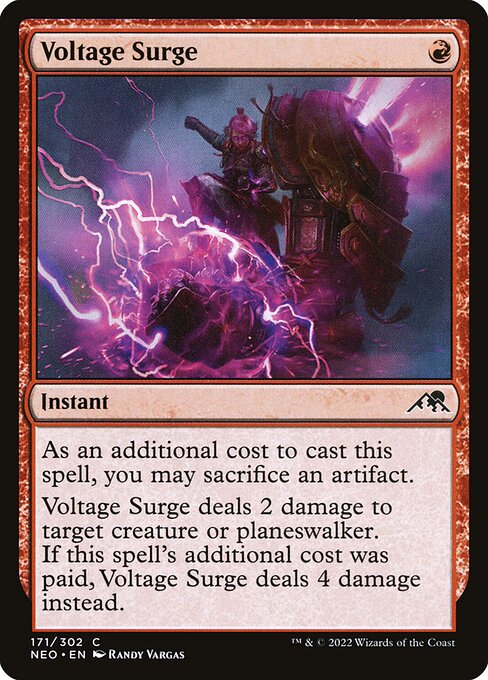Table of Contents
It’s no surprise that the current Standard environment is a midrange war, especially between Mono White and Grixis. You also see Mono Red, Mono Blue, and Soldiers here and there. With all those top decks it seems like one colour is left behind – Green. I do think there is a way to make green playable in Standard, though, and it’s thanks to Storm the Festival.
Interaction into big threats is an approach that midrange decks in Standard already use and this one is no different. However, what separates this shell from other, more traditional decks is that the top-end is nigh-unstoppable. All the threats generate value when they enter or leave the battlefield, and at some point, Storm the Festivals are going to get cast and absolutely bury the opponent. On top of that, the threats are not only there to generate cards but also to close the game. Once the deck gets going, it closes the door on the opponent pretty fast with 4/4 Dragons. If the name Gruul Monsters rings a bell, then this deck is for you.
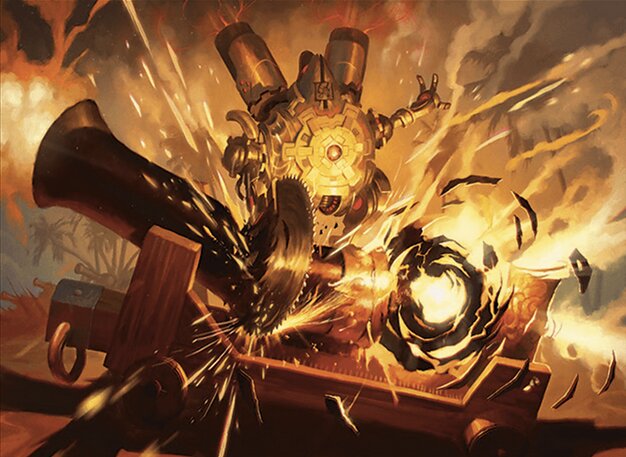


Creatures (11)
Sorceries (4)
Lands (24)
60 Cards
$241.68
Sideboard
15 Cards
$35.25
If you want to see the deck in practice, check out my latest video on YouTube!
Deck Tech
Threats
This shell has a relatively high curve and so not only do we want to make sure we get cast those expensive spell,s but also preferably ahead of schedule. Armored Scrapgorger is the absolute best early-game creature for this deck as it blocks the small threats and provides mana of any colour every single turn. In practice, it will usually mean that you can play a threat on turn three like Fable of the Mirror-Breaker or Contagious Vorrac and hold up Voltage Surge, or deploy a four-drop such as Atsushi, the Blazing Sky or The Elder Dragon War ahead of the curve. Such speed boost is even more impactful when done on the play, as you’d be deploying a four-drop when the opponent has still two lands in play.
What makes Scrapgorger even stronger is that it does not stop being relevant after those initial few turns. Each time it’s tapped (mostly for mana), it will get an oil counter. When the third counter is placed, it becomes a 3/3 permanently. At this point you can still use it to generate mana, but it also now blocks and puts pressure on the opponent. This, in turn, means that draws including multiple copies do not have a sudden drop in value on, say, turn five like it would with Elvish Mystic.
On top of all of that, whenever Scrapgorger becomes tapped it also exiles a card from a graveyard. While it has not come up often for me, it may be relevant against certain cards or matchups, as there are still graveyard interactions in the format. It can range from exiling Atraxa, Grand Unifier so that it’s not reanimated or Memory Deluge to disable the flashback, to getting rid of Phoenix Chick. This incidental grave hate comes in handy so be on the lookout for when it may be used as an effective tool against your opponent.
This limited playable common does plenty for this deck. Vorrac’s main purpose is to find us a land to ensure that we can play those 4+ drops, which we have plenty of. Even in a 24-land deck you might find yourself lacking that fourth or fifth, so it’s a great insurance policy that you do not get short on mana.
It being a 3/3 is not irrelevant either. It blocks and trades in combat very well against all the Mono Red creatures, Soldiers, or Grixis threats in Corpse Appraiser or Bloodtithe Harvester. Our goal is to stay alive until we can start slamming the beefy threats, so having a Boar that can hold the fort for a bit is certainly valuable.
Let’s get into our first Dragon card in the deck. Atsushi, the Blazing Sky is a 4/4 flying trampler, so off stats alone, we can see that it can push damage through quite easily as it has two evasive keywords. Regardless of the size though, its real power comes from the death trigger.
When Atsushi dies, you get to choose whether you get three Treasure tokens or Light up the Stage. What you choose will largely depend on the texture of both your hand and the game.
I’d take Treasures when I am stuck on four lands and I want to be able to play Storm the Festival or a three-drop and a four-drop the following turn. Another case is when you want to cast removal immediately after Atsushi dies and have no other mana left – then Treasures will come in handy.
The impulsive draw effect is great for when you are a bit lower on cards which can actually happen. While the deck is filled to the brim with powerful threats, you may have mulliganed or drawn lands and interaction. In such a case, you want to exile the top two in order to get deeper into the deck.
While it’s tempting to always go for more cards, it won’t always be correct. Truth be told though, whichever you actually go for the opponent won’t be very happy about the situation they are in.
Technically it’s a planeswalker, but in practice it’s just a Treefolk maker. Wrenn and Seven is here to make those 8/8 creatures over and over again until the opponent can no longer answer all of them. The fact that they have reach is not irrelevant as it insures you against all the random flying threats that could come your way such as Phoenix Chick or Shivan Devastator. Unfortunately, you can -3 once and then you have to uptick Wrenn to be able to make more tokens later. While it’s not that bad, drawing 1-3 lands with the plus won’t change the game much when you already had enough material to play Wrenn in the first place.
Despite the usual uselessness of those lands, there can be ways to take advantage of them. Those redundant cards can be pitched to Graveyard Trespasser‘s ward, discarded to the opposing Liliana of the Veil, or cycled to our own Fable of the Mirror-Breaker. There are also some utility lands in the deck which are worth keeping an eye on as well.
Other than the -3 and the +1 whose purpose is to get to another -3, I don’t think I’ve used the other abilities whatsoever. It’s similar to Teferi, Temporal Pilgrim whose goal is to keep making tokens.
Even if it’s not the most flexible planeswalker you’ve seen, it’s very strong. The onus is on the opponent to get rid of it as otherwise they will have to deal with multiple 8/8s. My personal record for the Treefolk size so far has been a 13/13.
One of, if not the most played card in Standard right now. The initial draft had four copies, as you’d expect from a Standard midrange deck. However, not that long after I started playing with the deck, I realised that it does not fit the curve that well. You always have something better to do than drawing a single card. I’ve liked it as a two-of which may come in handy sometimes. If you lack the wildcards, you may drop it completely.
Still, it’s an early proactive play that makes the opponent have to react somehow – whether by trying to go toe to toe card-advantage-wise or kill you very fast. It excels when you have interaction-heavy draws as you can keep killing threats and refuelling.
This card goes hand in hand with Reckoner Bankbuster. The Mightstone and Weakstone adds mana that in this deck can be spent on our channel lands or Bankbuster in the main deck and on The Stone Brainand Unlicensed Hearse in the board. The real spice here is in the trigger. Getting a split card of Dismember and Divination does its job well, as it’s fully adaptable to the situation. You’re behind on board? Remove a big threat. You need to pull ahead? Draw two. Importantly, the removal part tags the biggest threats that you encounter often, including Sheoldred, the Apocalypse, Serra Paragon, or Sanctuary Warden.
Fable of the Mirror-Breaker is a staple in Red decks and it’s no different here. Goblin Shaman ramp is particularly important here, as it may allow us to play all of our top-end ahead of schedule.
The filtering offered by the second chapter lets us get rid of the chaff in specific matchups like removal against no creatures or redundant copies of big threats in order to find more lands or kill spells.
Reflection of Kiki-Jiki has one particular interaction that closes games almost on the spot and that’s copying Wrenn and Seven Treefolk tokens. If one 10/10 isn’t enough, then two surely are.
There is one trick for when you have two flipped Fables (and at least one is not summoning sick) that’s worth knowing.
- Pay one mana and use the Reflection without summoning sickness to make a token of the other Reflection.
- Pay one mana and use that token to make another token
- Rinse repeat
This way you can make as many *tapped* Reflections as you have mana. If you do it on the opponent’s end step, you will untap with all of them and can swing in, most probably for lethal.
For a card that sees no play, it’s shockingly good. The first chapter decimates early pressure against Mono Red, Soldiers, or even midrange decks where it destroys all Bloodtithe Harvesters and Goblin Shaman tokens or Spirited Companions. When played on turn three with the help of Armored Scrapgorger, it always pulled me way ahea, as their board was empty and I still had the saga going.
The second chapter is basically like Fable’s second chapter with the exception that here you can ditch as many cards as you want. I have frequently discarded 1-3 cards anyways, as it’s rare that I want to completely Windfall myself. When combined with Fable, it gives you more card selection than some blue decks may have.
The last mode gives you a 4/4 Dragon with flying. After you’ve dealt with the early onslaught and filtered your hand, you’re getting a sizeable threat that can put pressure with evasion. Sign me up!
Read ahead comes up a lot. When you’re not facing a bunch of x/1s or x/2s, the first chapter isn’t that relevant, so you will go to the second one. In some cases, you might just cash it in for a Dragon immediately to affect the board. Always think twice before you decide which chapter to go for.
This is where it all comes together. Thanks to Storm the Festival, you can put 10 mana worth of cards into play on turn six, possibly earlier. When playing against a fair deck, it’s going to be super tough for them to come back when you put in double The Elder Dragon War or Wrenn and Seven with Atsushi, the Blazing Sky.
While it has flashback, getting to 10 mana is not trivial. In addition, it’s rare that games would go so long that either you or the opponent haven’t won yet. The most frequent avenue to getting to the flashback is choosing three Treasures off Atsushi, the Blazing Sky‘s trigger.
Last but not least, Festival provides card selection, so you not only get two threats, but you get to choose *which* threats are best in a given scenario.
If you want to tinker with the deck, you could even diversify the threat base even more to get more flexibility and adaptability with Storm.
Interaction
You don’t want to lose the early game with all the top-end in hand, so some interaction is essential.
As this deck does not care much about closing the game by incremental margins, Play with Fire targeting players would barely be relevant. Voltage Surge has the added bonus of dealing 4 damage which widens the range of creatures and planeswalkers you kill. You can sacrifice Treasure tokens, Reckoner Bankbuster in response to removal, or The Mightstone and Weakstone after its trigger.
The usual go-to Red removal. Abrade kills off most early threats and has the added bonus to get rid of opposing prototype creatures, random Treasure or Blood tokens, or Reckoner Bankbuster. Solid, flexible removal that does the job.
Structurally, I prefer having more removal in this deck with so much card selection provided by Fable and The Elder Dragon War
Best of One


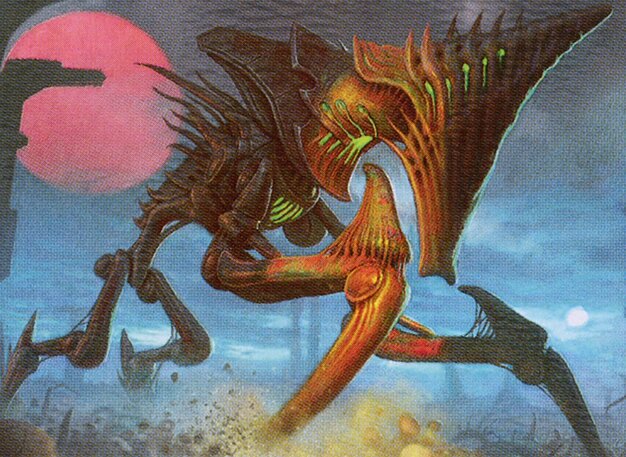
Creatures (11)
Sorceries (4)
Lands (24)
60 Cards
$241.68
The version of Best of One is aligned with the maindeck of the Best of Three version.
Budget
Unfortunately, there is no way to make the deck budget friendly. While the manabase could even be just basic lands, all the threats are rares or mythics. Changing them to uncommons would hurt the deck greatly.
Matchups and Sideboard Guide

Grixis Midrange
| IN | OUT |
|---|---|
| +2 Obstinate Baloth | -3 Voltage Surge |
| +2 Jaya, Fiery Negotiator | -1 Abrade |
We play a ton of removal so I like trimming a bit of it. I side in Jaya, Fiery Negotiator as another payoff. Obstinate Baloth isn’t particularly great, but gains a bit of life and blocks Corpse Appraiser and Bloodtithe Harvester. I could see myself playing more, especially if I see some Liliana of the Veil.
Game one, them having removal isn’t much of an obstacle as we get a ton of value out of each card before it gets removed. When you see Disdainful Stroke, it gets a bit tougher. However, you still have to brute force your way out of it.
Mono White Midrange
| IN | OUT |
|---|---|
| +2 Jaya, Fiery Negotiator | -2 Abrade |
Thankfully for us, Mono White Midrange cannot compete with us on the stack so everything we do will happen. All your Storm the Festivals and Planeswalkers are going to resolve and heavily affect the field.
The main tip is to try not to overextended too much into Farewell. I like making the board always threatening enough to make them have to have a mass removal spell, but never be cold to it myself.
Azorius Soldiers
| IN | OUT |
|---|---|
| +3 Brotherhood's End | -4 Contagious Vorrac |
| +1 Voltage Surge | -2 Reckoner Bankbuster |
| +4 Obstinate Baloth | -2 Armored Scrapgorger |
Post-board, we are a removal machine. I cut the early creatures, as that early game will be focused on removal anyways. On top of that, our creatures would die to Brotherhood's End anyways.
The main premise here is to remove everything we see to bridge into the big threats that affect the battlefield and can actually block.
Mono Blue Tempo
| IN | OUT |
|---|---|
| +2 Jaya, Fiery Negotiator | -2 Abrade |
Quite a tough matchup, as their Spell Pierces really hurt when we put a five-drop on the stack and we don’t really have effective removal against their threats. The best way is to go under-ish with our early drops and try to find a window later for a bigger threat.
Gruul Festival Mirror
| IN | OUT |
|---|---|
| +2 Jaya, Fiery Negotiator | -1 Voltage Surge |
| -1 Abrade |
The mirror is a wild threat fiesta as both players will have a ton going on. In such a case, it will be crucial to eke out all the value out of your threats – minimise the losses and maximise the profit out of trades.
Tips and Tricks

- Because Bound to Ruin”] -4 ability is worded so specifically, one cannot destroy your biggest creature to make the ability worse.
- Against decks with Graveyard Trespasser, it’s good to hold up Armored Scrapgorger to exile whatever their Trespasser targets.
- You can block a creature with Armored Scrapgorger, and after the blocks have been declared, activate it so that it gets the third oil counter and gets the buff.
- Even if you reveal a land with Contagious Vorrac, you can refuse to take it in order to get proliferate.
- If you see an artifact creature, it’s better to choose the ‘destroy target artifact’ mode on Abrade rather than 3 damage, even if the creature has 3 toughness or less, as it plays around a potential buff spell.
- In niche scenarios, you may need to kill your own Atsushi, the Blazing Sky to get its trigger and dig two cards deep.
- Don’t feel bad about cashing The Elder Dragon War in immediately for the third chapter. A 4/4 Dragon can dominate a lot of boards.
- You can play The Elder Dragon War on the first chapter after combat to kill off creatures that have been dealt damage in combat.
- The Elder Dragon War first chapter does *not* damage Planeswalkers.
Premium >
Enjoy our content? Wish to support our work? Join our Premium community, get access to exclusive content, remove all advertisements, and more!
- No ads: Browse the entire website ad-free, both display and video.
- Exclusive Content: Instant access to all exclusive articles only for Premium members, at your fingertips.
- Support: All your contributions get directly reinvested into the website to increase your viewing experience!
- Discord: Join our Discord server, claim your Premium role and gain access to exclusive channels where you can learn in real time!
- Special offer: For a limited time, use coupon code L95WR9JOWV to get 50% off the Annual plan!


























